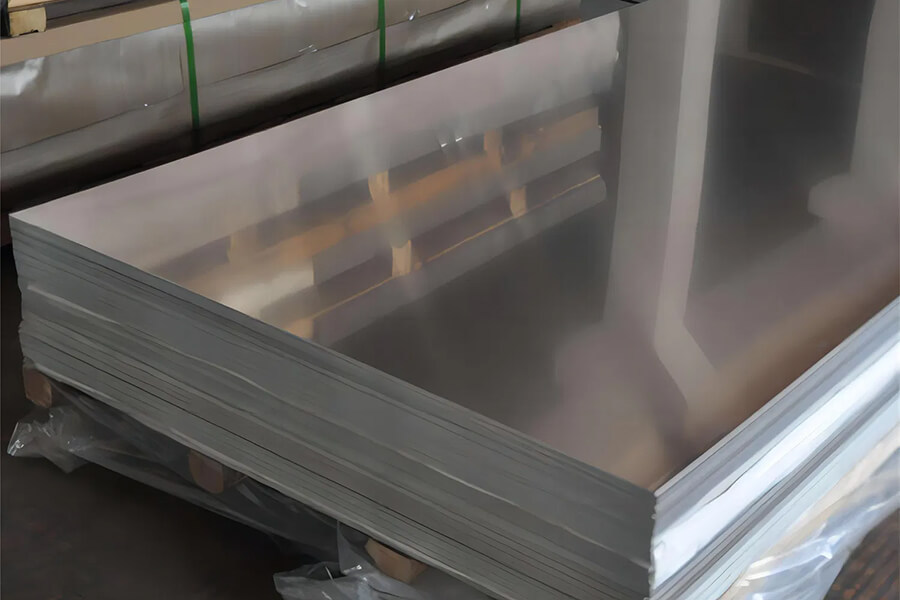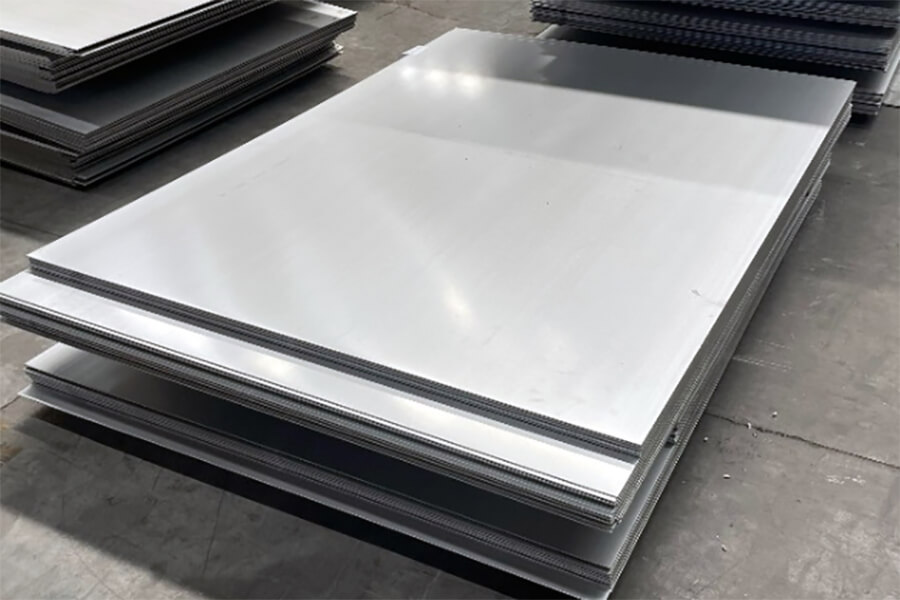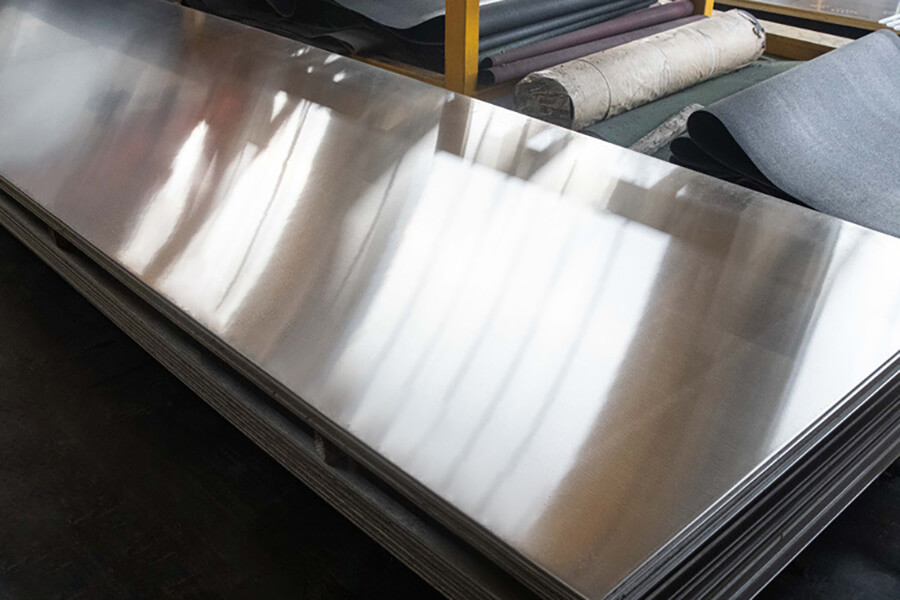
Tisco Shanxi Stainless Steel Co.,Ltd
Widely used in construction, machinery, coal, chemical industry, railway vehicles, automotive industry, roads, Bridges, containers, sports facilities, agricultural machinery, petroleum machinery, prospecting machinery manufacturing industry.
In this blog post, we will explore the mechanical properties of 316 stainless steel plates, focusing on how these properties contribute to the material's versatility and effectiveness across a variety of demanding applications.
What is 316 Stainless Steel?
316 stainless steel is an austenitic steel alloy primarily composed of iron, chromium (16-18%), nickel (10-14%), and molybdenum (2-3%). The addition of molybdenum enhances the alloy’s resistance to chloride corrosion, making it highly resistant to rust, stains, and pitting, particularly in marine and coastal environments. This makes 316 stainless steel an ideal choice for applications exposed to harsh chemicals and extreme weather conditions.
Mechanical Properties of 316 Stainless Steel Plate
Understanding the mechanical properties of 316 stainless steel is crucial for selecting the right material for your projects. Here are the key mechanical properties of 316 stainless steel plates.

1. Tensile Strength
The tensile strength of 316 stainless steel is a measure of the material’s ability to resist breaking under tension. For 316 stainless steel plates, the typical tensile strength ranges between 520 and 720 MPa (megapascals). This range is suitable for a wide array of industrial applications where high strength is required.
2. Yield Strength
The yield strength is the stress at which the material begins to deform permanently. For 316 stainless steel, the yield strength typically falls between 205 and 290 MPa. This makes 316 stainless steel an excellent choice for environments where high stress or load-bearing capabilities are necessary, yet the material still needs to retain its structural integrity.
3. Elongation (Ductility)
Elongation refers to a material’s ability to stretch or deform without breaking, an important factor for materials subjected to bending or forming. 316 stainless steel offers a high level of ductility with typical elongation values of around 40-50%. This makes it suitable for forming, welding, and deep drawing processes in manufacturing.
4. Hardness
316 stainless steel is not as hard as other alloys like 304 stainless steel, but it still offers a respectable level of hardness. On the Rockwell B scale, 316 typically registers between 70-90 HRB. The hardness of 316 stainless steel contributes to its ability to resist wear and tear in environments exposed to abrasive forces.
5. Modulus of Elasticity
The modulus of elasticity (or Young's modulus) defines the material’s stiffness. For 316 stainless steel, the modulus of elasticity is approximately 193 GPa (gigapascals), which is relatively high compared to many other materials. This characteristic is crucial in applications requiring dimensional stability under stress, such as structural components in the aerospace or automotive industries.
6. Impact Toughness
Impact toughness is an important mechanical property for materials used in applications where they may experience sudden or high-impact forces. 316 stainless steel exhibits good impact resistance, even at low temperatures, making it a reliable choice for critical applications where impact resistance is essential.
7. Creep Resistance
Creep refers to the slow deformation of a material under constant stress over time, especially at high temperatures. 316 stainless steel has excellent creep resistance, which allows it to maintain its mechanical properties over long periods of exposure to elevated temperatures, making it suitable for heat exchangers and other high-temperature environments.

Factors That Affect Mechanical Properties
The mechanical properties of 316 stainless steel can be influenced by several factors:
· Heat Treatment: 316 stainless steel is generally not heat treatable to harden it through standard methods, but it can undergo annealing to improve its ductility and toughness.
· Cold Working: Cold working, such as rolling or drawing, can increase the strength and hardness of 316 stainless steel. However, it can also reduce ductility and elongation.
· Composition Variations: Small changes in alloying elements (such as molybdenum and nickel content) can affect the material's mechanical properties. For example, higher molybdenum content may improve resistance to corrosion but reduce tensile strength slightly.
· Temperature and Environment: The operating temperature and environmental conditions (such as exposure to aggressive chemicals or salty environments) can influence the material’s mechanical behavior, especially its strength and corrosion resistance.
Applications of 316 Stainless Steel Plates
Given its robust mechanical properties, 316 stainless steel plates are widely used in industries such as:
· Marine and Offshore: Due to its exceptional resistance to chloride-induced corrosion, 316 stainless steel is commonly used in boat fittings, marine equipment, and offshore platforms.
· Chemical and Pharmaceutical: 316 stainless steel is favored in the chemical processing and pharmaceutical industries because it resists corrosive substances and is easy to sanitize.
· Food Processing: The material is non-reactive, ensuring that it doesn't affect the taste or quality of food products, making it ideal for food processing equipment and kitchen appliances.
· Medical Devices: 316 stainless steel’s biocompatibility, combined with its resistance to corrosion and wear, makes it a top choice for medical instruments and implants.

Conclusion
316 stainless steel plates combine high strength, excellent corrosion resistance, and impressive ductility, making them an ideal material for many demanding applications. Its mechanical properties enable it to perform reliably in a wide variety of industrial and commercial environments, from marine equipment to medical devices. Understanding the mechanical properties of 316 stainless steel is essential for selecting the right material for your projects and ensuring long-lasting performance.
If you're considering 316 stainless steel for your next project, be sure to consult with a material expert to ensure you're selecting the right grade and form of stainless steel that meets your specific needs.
- Related News
TISCO SHANXI STAINLESS STEEL CO., LTD
Add: No.2-1, Jiancaoping Street, Taiyuan, Shanxi Province.
Office Address: Plot A-4, Huazhi Vientiane World, No. 2 Maolingshan Road, Lixia District, Jinan City, Shandong Province